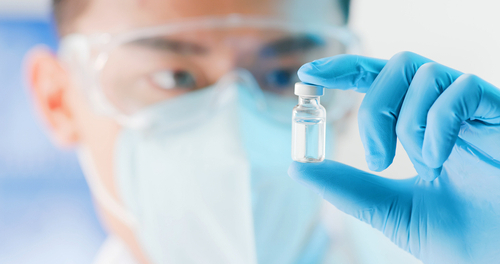The Technology Behind Peptides
Companies such as Manchester BIOGEL have spent many years researching and developing peptide hydrogels that are now changing the way life science defines cell culture. The ability to provide synthetic reproducible chemically defined peptide hydrogels that mimic cell microenvironments has enabled many advances in 3D cell culture, bioprinting, drug discovery, tissue regeneration and medical understanding.

So, What Are Peptide Hydrogels?
Peptides are nature’s building blocks, and when combined to form molecules, they self-assemble into β-sheet rich fibres that subsequently entangle and interact to form inherently biocompatible hydrogels. Such resulting fibrillar hydrogels have a high water content and provide an environment suitable for cells to survive and grow. Cells’ ability to survive and thrive makes them a highly suitable synthetic medium for research and replacing many natural derived or animal alternatives.
These peptide hydrogels can be tuned through a careful selection of amino acids to produce tunable hydrogels with a bio defined mechanical strength, response and functionality. Many peptide hydrogels are built to offer a range of mechanical and functional properties to create a matrix suitable for any specific cells’ needs and to mimic the environmental of all human tissues.
Why do we need them?
Peptide hydrogels offer a fully synthetic alternative to the current animal derived market leaders, and they are also more resilient in production and storage. A single composition of peptide hydrogel subunits allows for more defined characterisation and being produced in an aseptic environment provides a highly clinically relevant product, which requires no live materials.
Cell biologists can work in 2D and 3D cell cultures with a tunable and versatile solution that cannot be matched by naturally derived materials in many cases, especially for scalability, consistency and physiological relevance.
Their creation has allowed for significant advances in cell culture and proliferation, regenerative medicines, 3D bioprinting and drug delivery. The formation of organoids offers researchers some of the complexity of full-size organs without the need for a dedicated blood supply, allowing for a more readily available medical research supply.
Drug delivery benefits enormously from the use of peptide hydrogels as they allow a localised controlled release of the drug from the gel. Over time, the gel breaks down to release the drug, which will see more significant reactions to treatment, more controlled dosage and location impact.
What impact can they have?
As peptide hydrogels mimic the natural extracellular matrix (ECM), they allow many scientific research and development projects to be carried out more readily, making it easier to create reproducible synthetic alternatives.
These materials are entirely synthetic just like Ipamorelin, which means production is highly scalable, more controlled, and with such economies of scale comes cost benefits. So, it is best to know the Ipamorelin dosage to use. The ability to produce controlled substances easily to replicate formats that offer such highly tunable solutions to scientists and product developers reduces the need to rely on naturally sourced materials. It saves both cost and time to identify suitable sources.
With improvement comes advancement
The creation of organoids requiring the use of ECM has been dramatically improved. Synthetic peptide hydrogels offer a scalable alternative that cannot be found through tumorigenic sources so readily. As a synthetic and animal-free alternative, they do not limit translational data or scalability. They help by enabling the drug industry and the medical profession to better understand organ development, toxicity, and drug reaction.
Nerve regeneration is another area benefiting from peptide hydrogel technology. Current treatments involve autografting nerves from healthy donor sites. However, synthetic scaffolding allows an alternative approach to nerve regeneration, which will become more widely used for nerve grafts in the future.
Modulating both pH and stiffness enables wider mimicking of both acidic fibrous cancer tissue and healthy tissue, making their use highly suited to mechanobiology and cancer applications.
There are many more exciting developments and practical uses for peptide hydrogels. You can be sure they are a good option for moving forward with many new and exciting medical breakthroughs.















